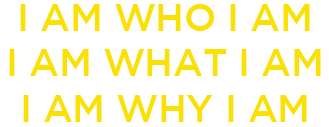Posted at 08:50h
in
Anecdotes,
I Am Time
Merton Simpson was a black man born in 1928 in racially segregated South Carolina. Merton was a musician, painter and, after settling in New York, a world-renowned tribal art dealer.
As a collector of tribal art, I met Merton in 1991 and over the years purchased a few objects he had on offer. More significantly, we became friends; that is, we were completely open in our talks; taking vicarious joy in each other's tales and perspectives, without judgement.
I did much of the talking as Merton was not a man of many words or paragraphs. Yet, Merton conveyed his feelings by laughing which is what he did much of our time together.
Merton loved the physical experience of being alive. He loved looking at art, listening to music, eating and fucking. I could appreciate that.
While in his day Merton was considered a top tribal art dealer, in his later years there was much talk about some of the objects he had on offer being of dubious authenticity. (Authenticity is the foundation of the collectible art market, without which art prices could not rise to as high as the sky. For if art was simply a visual experience, high quality "fakes" would be as valuable as authentic artworks.)
Some in the field of tribal art collecting suggested that Merton's "fakes" were not offered with malintent, but perhaps Merton with age lost his critical "eye" for identifying artworks that were "real" or "fake." However, I suspect Merton evolved beyond these artificial categorizations. Merton came to simply enjoy and appreciate art things, as well as things generally, as there were, not as a function of how they were categorized or relative to other objects. He saw things not as this, that or another, but as is.
In one of our many get-togethers, we looked at an African Nkisi figure, commonly called a "nail fetish," to consider whether it was "real" or a "fake." After some minutes, I asked Merton what he thought, to which he responded: "It is what it is."
That's as God self-identified to Moses: "I am what I am." Simply, Merton delighted at the light from the "Burning Bush."
...


